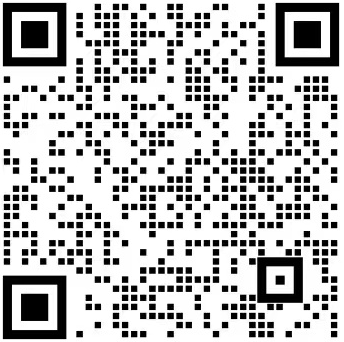PCU9656B: 24-bit UFm 5 MHz I²C-bus 100 mA 40 V LED driver
The PCU9656 is a UFm I²C-bus controlled 24-bit LED driver optimized for voltage switch dimming and blinking 100 mA Red/Green/Blue/Amber (RGBA) LEDs. Each LEDn output has its own 8-bit resolution (256 steps) fixed frequency individual PWM controller that operates at 97 kHz (typical) with a duty cycle that is adjustable from 0 % to 99.6 % to allow the LED to be set to a specific brightness value. An additional 8-bit resolution (256 steps) group PWM controller has both a frequency of 190 Hz and an adjustable frequency between 24 Hz to once every 10.73 seconds with a duty cycle that is adjustable from 0 % to 99.6 % that is used to either dim or blink all LEDs with the same value.
Each LEDn output can be off, on (no PWM control), set at its individual PWM controller value or at both individual and group PWM controller values. The PCU9656 operates with a supply voltage range of 2.3 V to 5.5 V and the 100 mA open-drain outputs allow voltages up to 40 V for the LED supply.
The PCU9656 is one of the first LED controller devices in a new Ultra Fast-mode (UFm) family. UFm devices offer higher frequency (up to 5 MHz).
The active LOW Output Enable input pin (OE) blinks all the LEDn outputs and can be used to externally PWM the outputs, which is useful when multiple devices need to be dimmed or blinked together without using software control.
Software programmable LED Group and three Sub Call I²C-bus addresses allow all or defined groups of PCU9656 devices to respond to a common I²C-bus address, allowing for example, all red LEDs to be turned on or off at the same time or marquee chasing effect, thus minimizing I²C-bus commands. Six hardware address pins allow up to 64 devices on the same bus.
The Software Reset (SWRST) Call allows the master to perform a reset of the PCU9656 through the I²C-bus, identical to the Power-On Reset (POR) that initializes the registers to their default state causing the output NAND FETs to be OFF (LED off). This allows an easy and quick way to reconfigure all device registers to the same condition.
A new feature to control LEDn output pattern is incorporated in the PCU9656. A new control byte called ‘Chase Byte’ allows enabling or disabling of selective LEDn outputs depending on the value of the Chase Byte. This feature greatly reduces the number of bytes to be sent to the PCU9656 when repetitive patterns need to be displayed as in creating a marquee chasing effect.
Outline 3d SOT313-2

Data Sheets (1)
| Name/Description | Modified Date |
|---|---|
| 24-bit UFm 5 MHz I2C-bus 100 mA 40 V LED driver (REV 1.0) PDF (968.0 kB) PCU9656 | 08 Dec 2011 |
Package Information (1)
| Name/Description | Modified Date |
|---|---|
| plastic low profile quad flat package; 48 leads; body 7 x 7 x 1.4 mm (REV 1.0) PDF (494.0 kB) SOT313-2 | 08 Feb 2016 |
Packing (1)
| Name/Description | Modified Date |
|---|---|
| LQFP48; Reel pack; SMD, 13" Q1/T1 Standard product orientation Orderable part number ending ,118 or... (REV 1.0) PDF (234.0 kB) SOT313-2_118 | 15 Apr 2013 |
Supporting Information (1)
| Name/Description | Modified Date |
|---|---|
| Footprint for wave soldering (REV 1.0) PDF (11.0 kB) HTQFP-HLQFP-LQFP-MSQFP-WAVE | 08 Oct 2009 |
Ordering Information
| Product | Status | Package version | Application | Enable | Operating Temperature (Cel) | PWMs | I2C-bus interface | Reset input pin | I2C-bus (kHz) | Operating voltage (VDC) | Max Sink Current per bit (mA) | No of Addresses | Max Sink Current, per package (mA) | Number of bits |
|---|---|---|---|---|---|---|---|---|---|---|---|---|---|---|
| PCU9656B | Active | SOT313-2 |
Package Information
| Product ID | Package Description | Outline Version | Reflow/Wave Soldering | Packing | Product Status | Part NumberOrdering code(12NC) | Marking | Chemical Content | RoHS / Pb Free / RHF | LeadFree Conversion Date | EFR | IFR(FIT) | MTBF(hour) | MSL | MSL LF |
|---|---|---|---|---|---|---|---|---|---|---|---|---|---|---|---|
| PCU9656B |  | SOT313-2 | HTQFP-HLQFP-LQFP-MSQFP-WAVE | Reel 13" Q1/T1 | Active | PCU9656B,118 (9352 964 27118) | PCU9656 | PCU9656B |    | Always Pb-free | 0.0 | 5.0 | 2E8 | 1 | 1 |
- SOT313-2 LPC1549JBD48
- HTQFP-HLQFP-LQFP-MSQFP-WAVE LPC54114J256BD64
- Reel 13" Q1/T1 LPC1342FBD48
- PCU9656B
